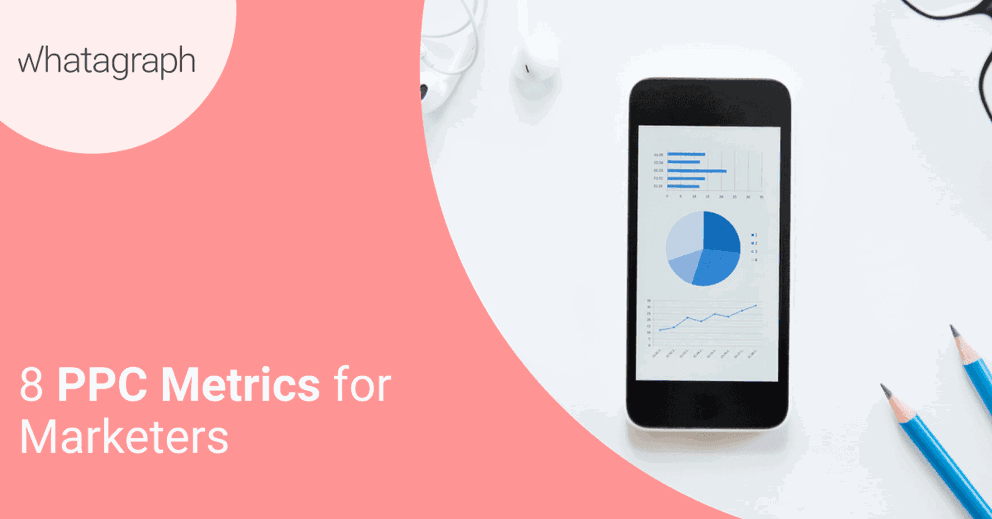8 PPC Metrics for Marketers
The era of incredibly successful advertising campaigns for billboards, magazines, and radio is something of the past and growing numbers of businesses spend their advertising money in online marketing.

Feb 10 2020●5 min read

What Is PPC Metrics Precisely?
PPC Metrics is a design of online ads that you advertise on the Search Engines and drive the traffic to your website. This is known as pay-per-click. As the title indicates, you pay for visits to your website any time your ad is opened.
You can sail through a massive ocean of PPC metrics when entering the world of online advertising. One explanation for the proliferation in pay-per-click (PPC) ads is that it is measurable. You will map and compare multiple views on your accounts and promotions through countless different metrics. A PPC ad is such an interesting tool to so many advertisers for the various applications of this material.
Digital marketing provides access to accurate sales funnels information that conventional advertising simply cannot deliver. You can track and improve your campaign with views, clicks, bounces, conversions and more.
What Are the Most Important PPC Metrics
The most important PPC metrics to track are:
- Clicks
- Cost-per-Click (CPC)
- Click-through Rate (CTR) — clicks / impressions × 100
- Conversion Rate — conversions / clicks × 100
- Return on Ad Spend (ROAS) — revenue from ads / ad spend
- Quality Score — Google’s ad scoring scale 1-10
Clicks
PPC Metrics’ sole purpose is to bring the visitors to your website, and evidently, you want to see the number of clicks. That’s the number of individuals clicking on your ad and proceeds to your website or landing page. It is difficult to look only at this metric, and see if it is efficient-the click rate (CTR) falls in here.
Click volume spikes or slumps can indicate campaign potentials or complications. When searches are growing, you should take advantage of the increased search volume, by updating your budget and making keyword offers more offensive. Yet on the other hand, if the clicks are down, your ad text or your keywords might be in trouble, or they could be an unwanted lull in the seasons.
The Average Cost per Visit
The average amount you pay per click is the average amount you spent on your website. This metric account can be viewed widely, or you can view it on a single keyword basis.
CPCs vary by industry and market and therefore, what makes a cost-effective CPC does not necessarily have a universal benchmark. It is a metric to see if you have specific aims in mind to determine your budget.
Click-Through Rates
The click-through rate is the number of clicks divided by the number of opinions. On average, it is the proportion of the population who view and tap on your infomercial. The accuracy of your advertising and the consistency of the keywords that you bid on can be measured with this figure. Your CTR may be very low because your advertising is not convincing, but it can also below, because you may have a term that doesn't correlate to what your publicity means.
Shared Impressions
This is how many people the ad was shown. This figure is a good illustration of just how much the search flow rate is accumulated on average by a particularly paid search (or keyword). You can assume, for instance, that if a certain keyword only has three impressions in a month, not many people use it when searching. On the other hand, you might say it is a bigger keyword if there are over a million impressions on it.
Conversion
A conversion literally is a user who completes your intent or desired actions, based on the targets you set in Google Analytics. Depending on your type of brand, that might be a call, a liaise form or even an auction. Same as clicks, it can be difficult to just look over this metric and determine if it operates well – the conversion rate applies here.
Rate of Conversion
Most marketers follow conversions, either in the form of leads or sales. Consider the fact that conversion thresholds across industries are not solidly benchmarked; they can vary considerably from advertiser to advisor. Trends are the star of the show, compared to other factors in terms of sales and conversion rates. Yet note that a conversion adjustment can be as easy as seasonality or as nuanced as the industry's changing business environment.
Some rapid checks you can do to look up lower conversion rates include:
- Verify the functionality of the tracking code, ensure it meets the standard
- To ensure that landing pages continue to be operational, keep an eye on the destination URLs
- See search queries for information about whether the advertisements are screened for irrelevant searches
- Be sure the ad text (using obsolete coupon codes, old price, etc.) is not out of date
- Make sure no keywords or paid search metrics have been disapproved
- Make sure that no contradictions occur between positive and negative keywords
Custom Cost per Conversion
An extremely useful measure of your PPC performance is the average amount spent per time someone makes a choice on your paid search, called Custom Costs per Conversion. CPCs are unique to each industry, but you're going to keep a close watch on patterns very much like clicks. CPCs have evolved across the board over the last few years, but some sectors have grown faster than others.
Keep in mind also that your CPCs are based on your keywords rivalry. If you begin to observe your CPCs increase, use long-distance keywords to attract more targeted traffic, or increase your bids, to keep your most important keywords competitive.
3 Ways of Reducing Your CPC
- See campaigns and keywords that endanger your brand and eliminate wasteful expenditure
- Reduce your Max Offer
- Go pessimistic even with your keywords. Including controversial keywords to your ad categories and promotions will increase their usefulness, allowing you to review your CPC and to deliver more relevant results with the Google Ad program
Complete Conversion Value
Another major metric for comparing campaigns, ad groups and even individual keywords is the complete conversion value. Some business owners find that shoppers looking for specific products are more likely to spend. The monitoring of your CCV weekly or monthly offers information into the shopping habits of your clients. Since your CCV is directly linked to turnover, it is a useful test for evaluating the performance of your campaign.
Keep in mind that CCV is also a better approach than increasing traffic since you boost sales and benefit from already-purchasing buyers. Therefore, throughout the selling process, you can refine your CCV, while the traffic is purely a top-of-the-line metric.
Return On Paid Search Metrics
Is the return on your PPC expenses and can be calculated by dividing your publicity campaign profit by the costs of your publicity campaign. This is the most important measure, as it shows you what and what kind of return you can expect from your investment even when you raise or decrease your PPC performance.

WRITTEN BY
Gintaras BaltusevičiusGintaras is an experienced marketing professional who is always eager to explore the most up-to-date issues in data marketing. Having worked as an SEO manager at several companies, he's a valuable addition to the Whatagraph writers' pool.